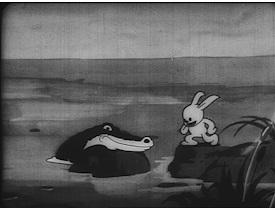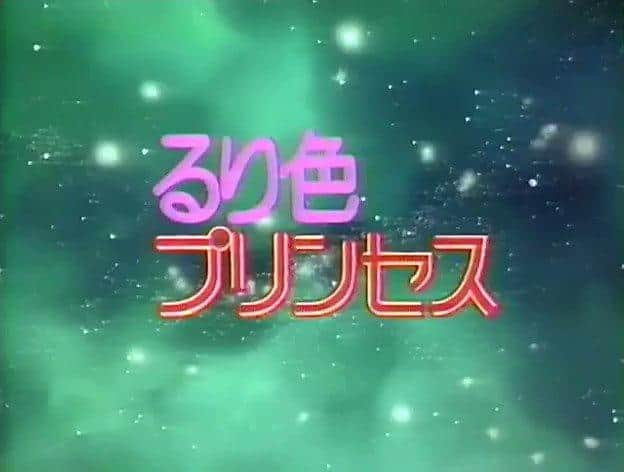Review of "Usagi-san of Inaba Country": A fascinating story and deep characters

"The Rabbit of Inaba Country": A masterpiece that marks the dawn of Japanese animation■Overview of the work"The Rabbit of Inaba" (Inaba no Kuni no Usagi-san) is a Japanese animated film released in 1935. It was released in theaters and the original media was traditional literature. It was distributed by Asahi Bussan Co., Ltd. Film Department and directed by Mitsuyo Seo. This work is based on the Japanese legend of the White Rabbit of Inaba, and it is packed with a deep story and beautiful images in a short time of just 10 minutes. ■ Story■Story DetailsThe story of "The Rabbit of Inaba Province" is a touching tale about a white rabbit from the province of Inaba. One stormy night, the white rabbit is swept away by a big wave and washed up on the opposite island. With a strong desire to return to his homeland, he tries to trick a crocodile to get to the island, but ends up having his skin torn off by the crocodile. However, he is saved by the compassionate Lord Okuninushi. This story is detailed on page 214 of the History of Japanese Animation Films, and is said to have deeply moved viewers at the time. ■ Main staff■ Details of the main staffThe director and artist of this work is Mitsuyo Seo. He is an important figure who supported the dawn of Japanese animation, and his talent and passion are poured into this work. The Asahi Bussan Co., Ltd. Film Department produced this short but highly polished work. ■ Background and significance of the work"The Rabbit of Inaba" was produced in the 1930s, when Japanese animation films were still in their infancy. Animation during this period was a constant process of trial and error, both technically and artistically, but thanks to the talent of Seo Mitsuyo, he was able to beautifully depict a traditional Japanese legend. This work is said to have had a major influence on the later development of Japanese animation, and it is a valuable page in the early days. ■Video and MusicThe visuals in this film are of extremely high quality considering the technical standards of the time. The expressions and movements of the white rabbit, the fearsomeness of the crocodile, and the kindness of Okuninushi-no-Mikoto are all realistically expressed through hand-drawn animation. Music is also an important element in adding excitement to the story, playing a role in evoking the emotions of the viewer. In particular, the music in the scene where the white rabbit is saved creates a moving climax. ■ CharactersThe main characters in "The Rabbit of Inaba" are the White Rabbit of Inaba and Okuninushi-no-Mikoto. The White Rabbit is portrayed as a pure and brave character, evoking sympathy from the audience. On the other hand, Okuninushi-no-Mikoto is merciful, and is impressive for his efforts to save the White Rabbit. Through these characters, themes of good and evil, and salvation are depicted. ■ Evaluation and impact"The Rabbit of Inaba" was highly praised by viewers at the time. It succeeded in depicting a deep story in a short time, and touched many people. This work also occupies an important place in the history of Japanese animation films, and is said to have influenced later animation works. In particular, the attempt to depict a traditional Japanese legend through animation has been carried over to later works. ■ Recommendations and how to watch"The Rabbit of Inaba" is an essential work for understanding the history of Japanese animation films. The deep story and beautiful images packed into a short time frame can be fully enjoyed by modern audiences as well. It is especially recommended for those who are interested in traditional Japanese stories and the history of animation. It is currently available on DVD and online distribution services, so please give it a watch. Related works and referencesThe original story of "The White Rabbit of Inaba," which is the basis for "The Rabbit of Inaba Country," is a widely known Japanese legend and has been featured in a variety of other media. For example, this legend is sometimes depicted in picture books, children's literature, and even modern animation works. Another reference is "History of Japanese Animation Films." This book provides a detailed explanation of the work and the background of the time, which will help you understand the work more deeply. ■ Summary"The Rabbit of Inaba" is a masterpiece that marked the dawn of Japanese animation. Packed with a deep story and beautiful images in a short 10-minute run, this work moved viewers at the time and had a major influence on later animation works. The attempt to depict traditional Japanese legends through animation has been passed down to modern animation, and its significance is immeasurable. Please watch it at least once and experience its moving beauty. |
>>: Private Norakuro: Reevaluating a classic anime from the good old days
Recommend
Korean zombie film "Alive" character trailer escapes from zombies
Recently, the character trailer and new stills of...
The appeal and reviews of "Log Horizon": A realistic experience of the world of MMORPG
The appeal and worldview of "Log Horizon&quo...
The appeal and reviews of the second season of "Kyoukai no Rinne": New adventures and a deeper story
All-round review and recommendation of Rinne Seas...
The new trailer of the movie "The Legend of the Condor Heroes" shows Xiao Zhan's handsome and cool Guo Jing
Recently, the official movie of The Legend of the...
Netflix's new drama "Vikings: Valhalla" officially released in Chinese, and will be broadcast on February 25
Netflix's new drama "Vikings: Valheim&qu...
Dune is released as scheduled. Why does such an advanced civilization have no computer robots?
Last weekend, the much-anticipated science fictio...
X-Men series North Star actor announces coming out as gay and identifies more as male
Recently, according to foreign media Yahoo report...
Jackie Chan's new film "Vanguard" released the first trailer, Yang Yang's fairy-like appearance steals the show
Previously, we have reported that Jackie Chan wil...
The "Kowloon Walled City" film series will be filmed into a trilogy, and two new films have been approved
It looks like the "Kowloon Walled City"...
The appeal and reviews of "The Moon and the Princess": A moving story and deep characters
"The Moon and the Princess": A moving f...
Spielberg's "Amazing Stories" to be aired on Apple TV on March 6
Today (February 18), "Amazing Stories",...
The appeal and reviews of "Yurei Deco": an anime experience not to be missed
Yureideco - A new type of anime depicting the mys...
Bincho-tan: A thorough look into the fascinating world of healing and adventure
Bincho-tan - Bincho-tan - Appeal and Evaluation ■...
Producer: The "Ted" series will be consistent with the movie's tone
In April this year, Peacock, a subsidiary of Univ...
Hana no Ko Lunlun: Hello in Cherry Blossom Country! A thorough review of the fascinating story and characters
Lunlun the Flower Child: Hello, Cherry Blossom Co...









